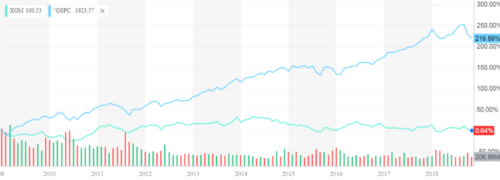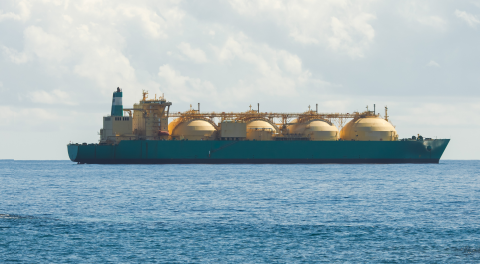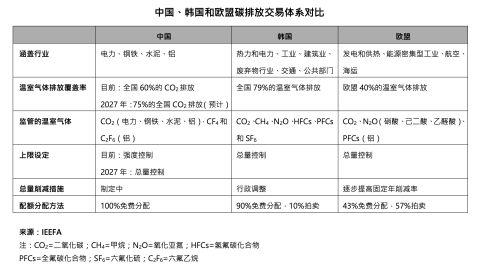IEEFA U.S.: ExxonMobil goes back large into risky Canadian oil sands
ExxonMobil’s (“XOM”) Canadian subsidiary Imperial Oil has announced its intention to invest C$2.6 billion[1] in the Aspen mines, an oil sands project in Alberta, Canada. This is big news. In February 2017, the company formally de-booked 4.6 billion barrels of reserves in the Canadian oil sands, 19% of XOM’s worldwide reserves. The Aspen announcement was accompanied by promises of continued investment in Canada.
This investment is likely to follow ExxonMobil’s investments in Russia, Mexico, XTO and its Canadian gas and oil sands – all underperforming or complete failures. The company’s weak stock performance over the last decade — which reflects these underperforming and failing investments — is the shaky foundation upon which the Aspen project rests.
Table: XOM stock price versus SP 500 (2009 to present)
When looking at the factors shaping todays market, the investment is big news as it is the first new oil sands project launched in the past five years. New oil sands investments face transport bottlenecks, high production costs, and low and volatile oil prices. They compete for capital with natural gas production in an industry that is divided by politics and business strategies.
The week of the Imperial announcement saw global oil prices heading downward again. Unfortunately for oil sands producers, the run-up in oil prices that preceded the recent drop had only a muted impact on their revenues. The price differential between West Canada Select (WCS), the Canadian oil sands product, and West Texas Intermediate (WTI) oil has widened, severely reducing the price received by Canadian producers. The difference in price historically has been roughly $12/bbl, but has now increased to more than $40/bbl, reducing the amount oil sands producers received in late September to an anemic $35/bbl, even when WTI had climbed above $70/bbl.
Longer-term, this Aspen investment faces four substantial headwinds that suggest trouble ahead.
- Oil sands’ largest market is ocean-bound shippers and that market faces significant challenges and potentially lower demand and downward price pressures. Compliance with new international low-sulphur maritime fuel regulations, which go into effect between 2020 and 2025, will require a complex and costly refining process for oil sands products or investment in new pollution control technology. The industry will also face competition from lower sulphur products. Reduced demand and lower prices for oil sands will occur through 2020-2021 — just as the new Aspen project goes into commercial operation.
- The Imperial strategy seems to assume that Canada will resolve its transport problems and reduce its costs by approving additional pipeline capacity into the United States or through British Colombia. Right now, two important pipeline projects, Keystone XL and Trans Mountain, are mired in controversy and held up by judicial systems in both Canada and the United States The two-fold assumption — that the pipeline projects will be approved and that, once approved, oil sands producers’ bottom lines will improve — will be tested.
- Imperial’s problematic assumption is that its integrated operations provide the company with sufficient internal financial hedges to manage Aspen’s potential downside risks. The Imperial thesis: if the price of WCS oil remains steeply discounted, then the oil sands product can serve as a cheap input into Imperial’s refining business, and profit margins in this segment will improve. During its 3Q 2018 earnings call, XOM noted that the refinery business has improved since prices for Canada’s oil sands product fell. Improved refinery margins purportedly made up for the substantial drop in oil sands’ prices and the resulting hit on the profits of its oil operations.This of course violates the principle that every investment should stand on its own merits. Clearly, investing in high cost, low margin oil sands and subsidizing it with refinery profits will only add to oil companies’ long-term problems, it does not solve them.In the short-term, this hedging strategy distorts the market, pits one company against another further weakening the industry’s political position and destabilizes the Alberta economy. Persistently low prices will place smaller, non-integrated operations at an immediate competitive disadvantage. For example, Cenovus and other smaller concerns have a traditional business model where their stand-alone oil investments are measured by profits on a per barrel basis. Smaller concerns are lobbying the Alberta government to support cuts in production now in order to boost per barrel revenues now. Suncor, Imperial and Husky, all larger companies, oppose production cuts content to allow market forces settle out the winners and losers.The larger integrated companies make a short term gain at high costs to the industry and Alberta and place the financial viability of their oil portfolios at risk. The smaller concerns seek government protection and underscore the fundamental financial weaknesses of this segment of the industry.
- Finally, Imperial runs the risk of incurring further negative investor response as the company reverts to speculative investing. ExxonMobil and Imperial, like most oil and gas concerns, are emerging from a period of value destruction and investor skittishness. Imperial’s leadership, which pledged that its future capital investments will be more carefully designed, claims Aspen makes sense because the oil services market is down and therefore development costs to put the reserves into commercial operation will be low. This may be true, but given the short and long-term risks the investment rests on highly speculative assumptions.
Imperial’s investors may also see it differently. The company is going back into a market that it just wrote off less than two years ago. Against this backdrop, the Aspen project is not a prudent decision. In October 2016, when the company initially acknowledged it would be writing off its oil sands reserves, the stock dropped more than four points over a four-day period, a loss of $17 billion. An investment of $2.6 billion in the Aspen project may not look like much money to an Imperial manager charged with managing more than $80 billion in investments between now and 2021. Investors, however, might prefer an enhanced dividend.
Overall, the Aspen project is ExxonMobil’s management pursuing reserve growth for its own sake. The project, by Imperial’s own admission, is unlikely to be a stand-alone revenue-generating proposition. Its value premise is, at best, tortured. Despite the recent history of losses from a trail of poor investments, management is moving forward with more speculation, moving the company further away from its position as a blue chip, stable market leader.
What is apparent for oil sands producers, whether large or small, integrated or freestanding, is that their value proposition today and into the future faces four strong headwinds.
Tom Sanzillo ([email protected]) is IEEFA’s director of finance.
RELATED ITEMS:
IEEFA Update: As ExxonMobil Doubles Down on Oil and Gas, Investors Go Elsewhere
IEEFA Canada: Ill-advised oil sands project faces rough future
IEEFA Exxon: Why the Abrupt Revision on Reserves?
[1] All $ are U.S. unless specifically noted otherwise.
















